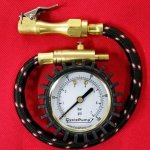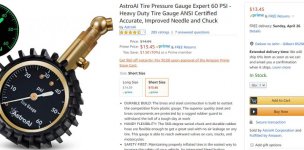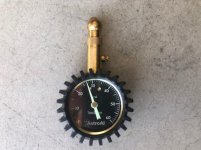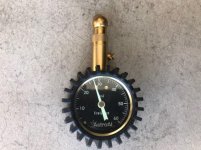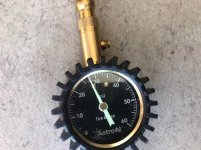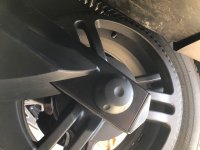johnsimion
New member
JT Machine Shop... Has a dual line single feed balance guage that is the way to go. Inflate both front tires o desiresd pressure and release the bucks and you have equal pressure in both tires. Use one line to do the rear. :2thumbs:
I also agree that this sounds like a great idea ... unfortunately none of the "JT Machine Shop(s)" in my google search turned up anything like this. Nor could I find anything really on point on Amazon or elsewhere on google. The closest I could find were https://adventure-imports.com/product/indeflate/ which is ridiculously expensive, and this home-made tubing setup for off-road Jeeps that is designed to use with an onboard inflator (but wouldn't have to be): https://trail4runner.com/2018/05/06/diy-4-tire-inflation-system/. The latter seems about ideal if reduced to only two wheels, but naturally being lazy I looked for a similar commercial product and found none. There are lots of tires to help air up "duallies" but none to air up the front wheels equally at the same time ... unless someone here has a good idea.
Seems to me like it would be good to manufacture a commercial product to air up two wheels simultaneously to the exact same pressure. The market would not just be Spyders but all car owners could benefit. Connect the hoses to both front wheels or both back wheels and inflate and equalize them at the same time.
If anyone knows where/how to find such a product -- or has a link to the elusive JT Machine Shop, please let me know.

